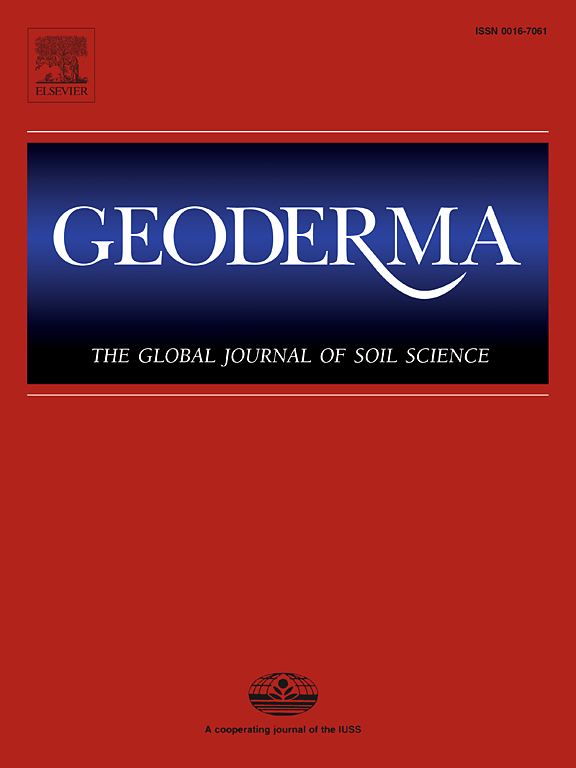利用无人机图像和机器学习推进生物结壳遥感
IF 5.6
1区 农林科学
Q1 SOIL SCIENCE
引用次数: 0
摘要
生物结皮是旱地主要的地表覆盖类型,在很大程度上驱动着生态系统功能,并对生物多样性做出了贡献。然而,它们的体积小,颜色与背景土壤和植被相似,使它们难以用遥感监测。我们开发了一种简单而准确的野外方法,用于大规模的生物结壳调查,利用无人机图像和机器学习,以视觉地面调查数据为指导。我们比较了三种不同的相机传感器——RGB、多光谱和热传感器的精度。利用XGBoost预测模型将地被植被划分为6类,包括3种生物群落形态类型(裸地、蓝藻-地衣、甲壳-毛囊-地衣、苔藓、死植被、活植被)。视觉地面调查数据和精细摄影被用于地面真实无人机图像,以开发训练数据集。模型输出表明,多光谱是最佳的无人机相机传感器类型,准确率最高,达到97.0%,NDVI是模型最重要的波段。当我们将该模型应用于50平方米的地块以验证其预测时,我们得到了与实地调查和精细照片的视觉分类相似的结果,成功地将生物痂从裸地中分离出来。我们相对简单的方法可以应用于生物结壳,使用现成的低成本技术。有相当大的机会利用这一方法,利用遥感提供景观一级的生物结壳评估,从而改善旱地的恢复和管理,以促进保护。本文章由计算机程序翻译,如有差异,请以英文原文为准。
Advancing remote sensing of biocrusts with drone imagery and machine learning
Biocrusts are a major ground cover type in drylands, driving ecosystem function and contributing to biodiversity at large scales. However, their small size and similar colour to background soils and vegetation make them challenging to monitor with remote sensing. We developed a simple and accurate field method for large scale surveys of biocrust, using drone imagery and machine learning, guided by visual ground survey data. We compared the accuracy of three different camera sensors- RGB, multispectral, and thermal. We used XGBoost predictive modelling to classify groundcover into six classes including three biocrust community morphology types (bare ground, cyanobacteria-lichen biocrust, crustose and foliose lichen biocrust, moss biocrust, dead vegetation, live vegetation). Visual ground-based survey data and fine-scale photography were used to ground truth drone imagery to develop training datasets. Modelled outputs demonstrated that Multispectral was the best drone camera sensor type, with the highest accuracy of 97.0 %, with NDVI the most important band for the model. When we applied the model to 50 m2 plots to validate its predictions, we had similar results to visual classification from field surveys and fine-scale photographs, successfully separating biocrust from bare ground. Our relatively simple method can be applied to biocrusts using readily available, low-cost technology. Considerable opportunities exist for using this approach to provide landscape-level biocrust assessment, using remote sensing, leading to improved restoration and management of drylands for conservation.
求助全文
通过发布文献求助,成功后即可免费获取论文全文。
去求助
来源期刊

Geoderma
农林科学-土壤科学
CiteScore
11.80
自引率
6.60%
发文量
597
审稿时长
58 days
期刊介绍:
Geoderma - the global journal of soil science - welcomes authors, readers and soil research from all parts of the world, encourages worldwide soil studies, and embraces all aspects of soil science and its associated pedagogy. The journal particularly welcomes interdisciplinary work focusing on dynamic soil processes and functions across space and time.
 求助内容:
求助内容: 应助结果提醒方式:
应助结果提醒方式:


